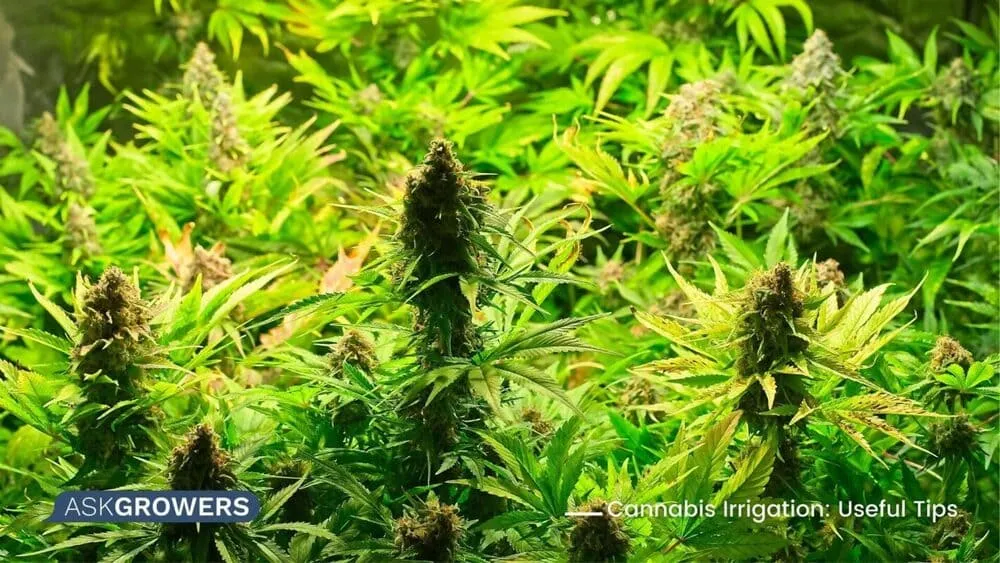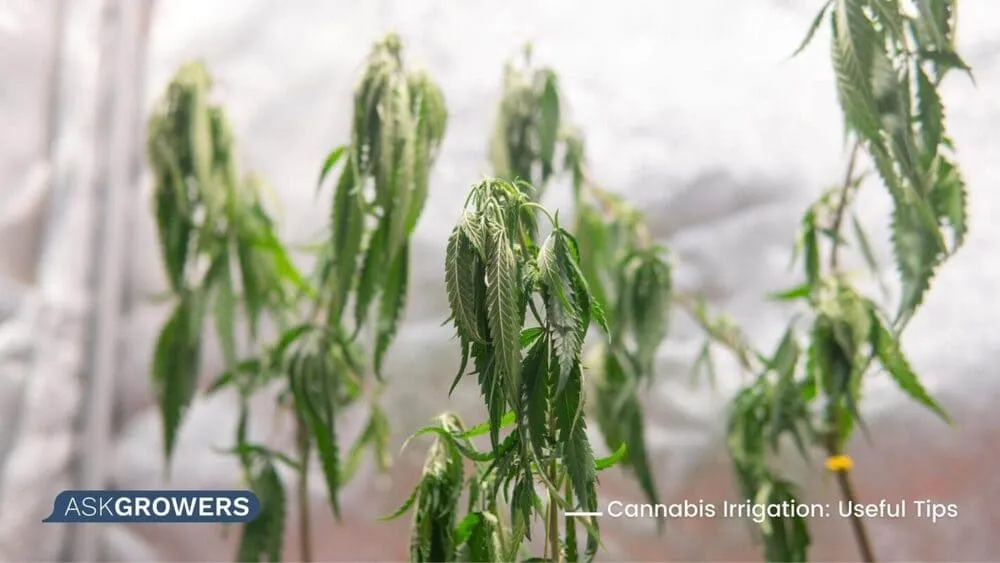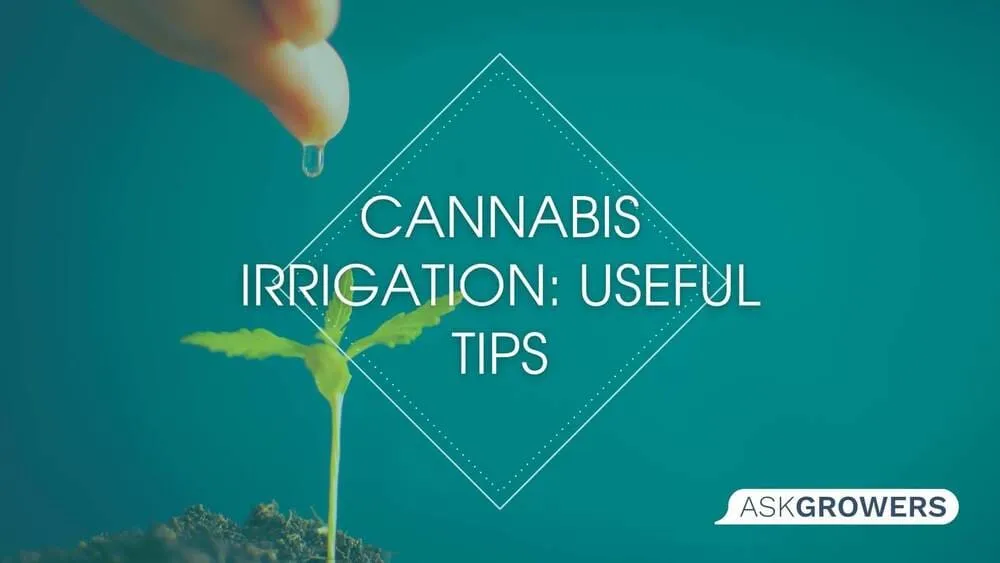Water quality and quantity are crucial for cannabis growth. This plant requires approximately six gallons of high-quality water every day. Therefore, the industry is currently searching for ways to optimize water use. A report by the New Frontier Data showed that advanced cultivation and irrigation practices emerge to optimize yield and decrease the environmental impact.
The science behind the irrigation process is critically important, but there are also some basic rules every grower needs to know to make irrigation more efficient. So, let’s dwell on the most important practices and approaches to cannabis irrigation that will help you grow healthy and robust plants.
Hand Watering vs. Automated Irrigation: What to Choose?
Irrigation practices vary across indoor and outdoor marijuana-growing facilities. They range from old-school hoses and watering cans to smart irrigation systems with sensors. One may easily become overwhelmed with the number of irrigation options for cannabis and the cost of the most sophisticated systems.
We recommend evaluating the scale of your cannabis cultivation to make the right choice. There’s no point in springing for costly irrigation equipment if you own a small indoor garden, including only a few pots. Spending a fortune on the auto-watering cannabis system to grow several buds is the last thing you want to do, right? That’s why drip irrigation isn’t best for cannabis growers having no intention to scale up. Besides, you will enjoy the personal touch and will be able to monitor the water needs effortlessly by watering your plants manually.
However, large weed producers may find hand watering tedious, ineffective, and time-consuming. Taking care of many plants every day is hard work, so it is better to use drip irrigation. This method helps deliver water consistently and regularly to each container, thus ensuring that all plants are grown in the same conditions. Other benefits of automated irrigation include:
- Improved water and nutrient use
- Reduction of water waste
- Improved crop resilience
- Saved time and labor
Fertigation is a helpful addition to automated watering. This practice involves mixing water with nutrients and delivering this solution to cannabis plants. Don’t underestimate the power of correctly delivered fertilizers. They can strengthen your plants and boost their growth so you can enjoy a generous yield.

Want to know the best way to set up drip irrigation for cannabis? The simplest way to do it is to purchase specialized equipment specifically designed for indoor or outdoor watering, depending on your cultivation method. It’s better to find the system equipped with the best irrigation controller so you won’t have to worry about determining how much water to apply and when.
If this option is too expensive for you, build a line drip irrigation system yourself. There are many video tutorials and recommendations online on how to do it using simple and cheap materials and tools.
Marijuana Water Needs: Finding the Right Schedule
Many cannabis growers also need more guidance on how often and how much they need to water their cannabis plants. There is no golden rule here, as water needs vary depending on the following factors:
- Life cycle stage
- Strain
- Indoor/outdoor conditions
- Temperature fluctuations
- Growing medium
Overall, it’s always safer to regularly monitor the soil and plant condition rather than over-water the plants. Check how quickly the water drains into the growing medium and whether it is dry or moist. The plant itself can give you hints about its water needs. For example, it is a bad sign if cannabis leaves have become discolored. You must have failed to water the plant as much as it needed.
Finding the right schedule and sticking to it is vital for your weed yield and the environment. Experts stress that cannabis cultivation has become an ecological headache, especially in arid areas, so you need to make sure you do not waste water.
Other Tips
We bet you have many questions about irrigation that emerge as you take care of your precious marijuana garden. Let’s go through some of the most common ones.
- How to fix over watering cannabis? First of all, stop watering your plants so much! Wait for the water to evaporate and drain properly before watering the plant again. Second, ensure adequate drainage so that excess water would not build up in the growing medium.
- Why are cannabis leaves drooping after watering? It’s one of the most common symptoms of overwatering. Give your plants a break! By decreasing the quantity of water, you will help cannabis overcome the overwatering stress.

- How long to wait between watering to transplant weed plant? Water marijuana one or two days before transplantation. The soil should be moist but not wet because too much water will make it too heavy, damaging the roots.
- Does water quality matter? Cannabis growers often focus on water schedule and quantity and overlook the quality aspect of irrigation. However, a study conducted by Canadian researchers showed that irrigation water should be free from metals and pesticides and have the perfect pH, alkalinity, and electrical conductivity. All these parameters should be continuously monitored and adjusted to the needs of each specific cannabis strain.
- How does indoor irrigation differ from outdoor? Indoor watering is more regular and consistent because you control the environmental conditions. The outdoor garden, however, is exposed to varying temperature, humidity, light, and weather conditions, all of which affect cannabis water needs. In other words, you need to be more attentive to the environmental changes and adjust the irrigation schedule accordingly.
Conclusion
Irrigation skills are a product of intense work and effort. You need to use the old trial and error method to understand your cannabis plants’ needs. Be patient and attentive, and you’ll gain the skills and knowledge necessary for maximizing your yield.

